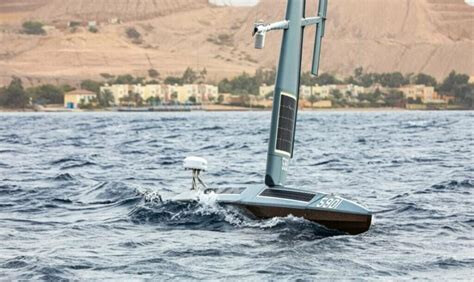The Saildrones can record above-the-surface video and use machine learning algorithms to detect targets. This is one of the main features the Navy is interested in.
In the Persian Gulf, the US Navy’s 5th fleet experimented with MANTAS robot boats. MANTAS can carry a range of sensors, from camera pods to hydroacoustic systems, allowing the vessels to look for objects and action in the sky, on the surface of the water, and under the sea. In the tests with the US Navy, the vessels mainly followed autonomous directions for monitoring. (US Navy TF59 Integrates MANTAS USV with Patrol Vessels)
The US Navy has been looking at ways to know more about the seas in which it operates, without committing to sending more sailors on patrol. For that purpose, the service has been testing new unmanned surface vehicles (USVs) in the Red Sea and the Persian Gulf.
https://www.thedefensepost.com/2021/12/15/us-navy-unmanned-saildrone/
It is equipped with solar panels to power onboard computers and sensors with artificial intelligence (AI) technologies. The Saildrone Explorer can also be used to conduct autonomous long-range data collection missions for up to 12 months without returning to port for maintenance or refueling. The US military has reportedly focused on integrating AI technologies into its high-powered weapons and equipment to increase its domain awareness during missions. - https://www.thedefensepost.com/2021/12/15/us-navy-unmanned-saildrone/
We are often sold these ideas to help with environmental monitoring, but technology and surveillance go hand in hand.


